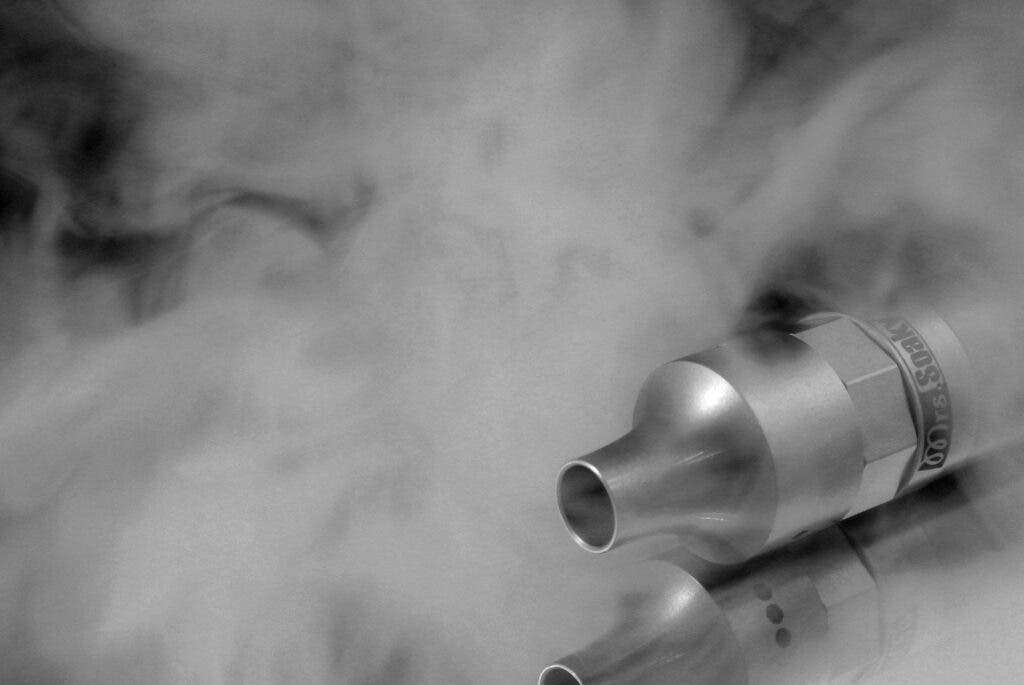
Crack cocaine, the smokable version of powdered cocaine, is one of the most addictive drugs in the world, with serious negative consequences for the person abusing this drug. Nearly 5,500 people in the U.S. died in 2014 from crack overdoses. In order to protect users, a pair of German researchers have proposed a solution that is sure to raise many eyebrows. The duo has designed a device that allows problematic crack users to administer the drug in a safer manner that, for instance, reduces lung damage and lowers the risk of overdose. It’s essentially a vape for crack.
Time and time again, research has shown that drug prohibition simply doesn’t work. In fact, it can even be harmful by promoting underground criminal activity and placing users at great risk since the supply is inherently unregulated. Despite a five-decade-long war on drugs that began with President Richard Nixon and has been continued by every administration ever since, there is no sign of victory in sight. Around 13% of Americans aged 12 years or older had used an illicit drug in the preceding month in 2019, as revealed by the National Survey on Drug Use and Health. That same year saw 70,630 deaths due to drug overdose, with 49,860 involving opioids.
In recent years, harm reduction has taken center stage as a more viable strategy to tackle the societal and public health ill-effects of drug abuse by promoting decriminalization, treatment, and regulated drug supply rather than punitive measures. One of the best examples of such a working strategy is Portugal, which in 2001 decriminalized the personal possession of all drugs as part of a wider re-orientation of policy towards a health-led approach.
After Portugal did its one-eighty drug policy, drug deaths dropped dramatically. While rates fell in Portugal following reform, they increased across the rest of Europe in the same timeframe. In real terms, drug death rates in Portugal remain some of the lowest in the EU: 6 deaths per million among people aged 15-64, compared to the EU average of 23.7 per million in 2019. And contrary to popular belief, decriminalizing drugs didn’t cause people to flock to them. Levels of drug use in Portugal have been consistently below the European average over the past twenty years and the Iberic country has some of the lowest usage rates in Europe among those between the ages of 15-34, which is considered the most vulnerable demographic.
Fabian Steinmetz and Heino Stöver, both members of Schildower Kreis — a network of German experts on drug policy reform — have not proposed drug decriminalization in their most recent study. Instead, writing in the journal Drug Science, Policy and Law, they have presented a device that assists in inhaling crack cocaine in a manner that is safer to users.
The biggest advantage is in terms of pulmonary health
Cocaine is a hydrochloride salt in its powdered form, but when combined with water and other substances, usually baking soda, the mixture forms a solid known as crack cocaine. The name comes from the crackling sound the drug produces when it is heated and then smoked. Crack is much more concentrated than powdered cocaine and produces a more intense rush because the drug reaches the bloodstream faster when smoked rather than snorted. The high wears off faster, which motivates users to take crack more often, making it very easy to become addicted.
Smoking crack is also associated with damage to the lungs, sometimes called “crack lungs”. A vaporizer for crack would address the lung damage while also decreasing the risk of overdosing.
The design of the device is nothing revolutionary. Like conventional e-cigarettes, it consists of a liquid container, an atomizer with a heater, and a battery. Except that instead of nicotine, you put a solution made of crack cocaine and propylene glycol, which the user inhales as vapor free of the fine particles and toxic combustion products that result from smoking.
The crack vape isn’t meant to be used with illicit drugs. Instead, it’s designed to be paired with a prescription model for people who visit the doctor for treating their addiction. This isn’t unheard of; some doctors in Canada, Germany, and Switzerland are allowed to prescribe heroin to addicts in safe doses in order to protect them from street drugs that could be tainted with other dangerous substances like fentanyl, which is now ‘the deadliest drug in America’.
A crack vape pen would only be used with a safe supply, free of undesired and potentially harmful compounds. It would also contain a known dose that a doctor could follow and steadily reduce if the objective is cessation. Furthermore, accessing the device legally would entail speaking with a doctor in the first place, which offers users the opportunity to have their drug abuse symptoms, be they sleep deprivation or cardiovascular problems, diagnosed by a medical professional.
Of course, the German researchers aren’t the only ones that have thought of a vape for drugs. Such devices have been modified to deliver various black-market substances such as THC (in countries where it is illegal) and DMT. E-cigarettes are, by this point, pretty old school — and that’s a good thing. It means that tried and tested vape designs can be easily reconfigured to accommodate crack cocaine, the researchers argue.
There are some risks that a vape pen for crack could pose, though. It is very likely that crack vape pens, if they are ever manufactured, will end up on the illicit market and could potentially encourage people to start using crack or use more of it if they are already a user. The only way to answer these concerns is to run well-designed randomized trials.
For now, a cocaine e-cig seems like a very distant prospect but its harm reduction potential shouldn’t be overlooked.






